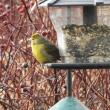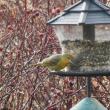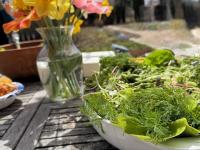The Dilemma
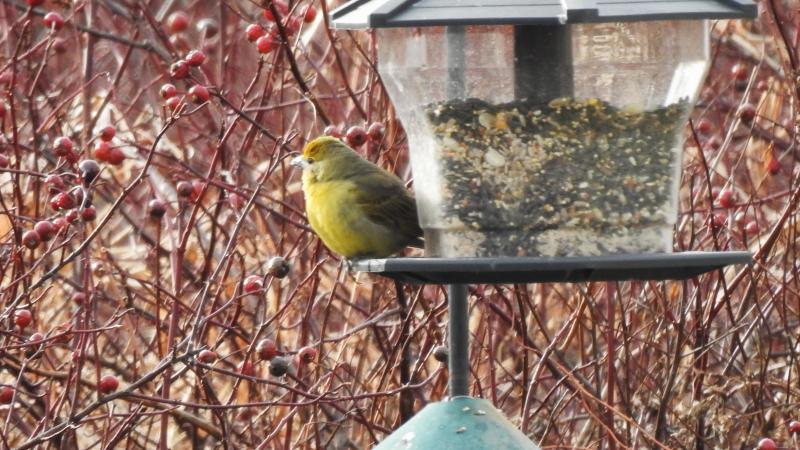 The authors took a pass on chores and errands to try their luck at seeing the state’s first hepatic tanager, in Stockton Springs. Their gamble paid off. Courtesy of Rob Speirs
The authors took a pass on chores and errands to try their luck at seeing the state’s first hepatic tanager, in Stockton Springs. Their gamble paid off. Courtesy of Rob Speirs
 “An average yard in rural Maine - who would have guessed such a rare bird would show up here?” Courtesy of Allison Wells
“An average yard in rural Maine - who would have guessed such a rare bird would show up here?” Courtesy of Allison Wells
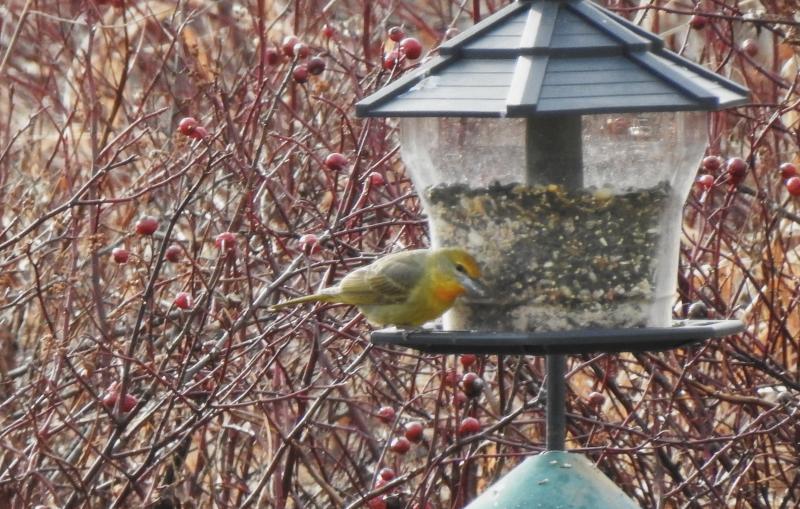 Hepatic tanager. Courtesy of Rob Speirs
Hepatic tanager. Courtesy of Rob Speirs
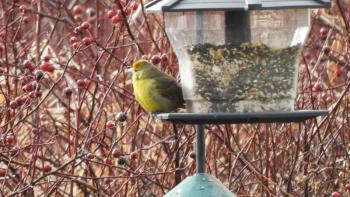 The authors took a pass on chores and errands to try their luck at seeing the state’s first hepatic tanager, in Stockton Springs. Their gamble paid off. Courtesy of Rob Speirs
The authors took a pass on chores and errands to try their luck at seeing the state’s first hepatic tanager, in Stockton Springs. Their gamble paid off. Courtesy of Rob Speirs
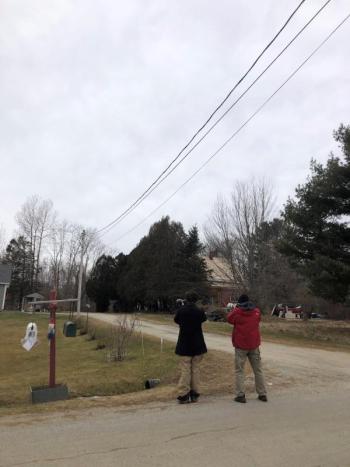 “An average yard in rural Maine - who would have guessed such a rare bird would show up here?” Courtesy of Allison Wells
“An average yard in rural Maine - who would have guessed such a rare bird would show up here?” Courtesy of Allison Wells
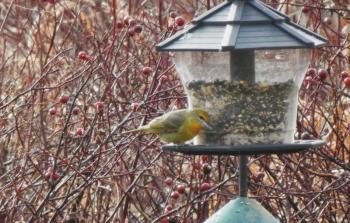 Hepatic tanager. Courtesy of Rob Speirs
Hepatic tanager. Courtesy of Rob Speirs
It was Saturday. Grocery shopping needed to be done. Prescriptions needed filling. The floors needed a vacuuming and the towels needed to be folded and put away.
A major snowstorm was forecast to arrive in the evening and dump snow all day on Sunday.
But Maine’s first-ever hepatic tanager was still visiting a yard in Stockton Springs!
This is the classic birder’s dilemma.
We responded the only way that made sense.
The tanager might not be there after the storm. We hopped in the car, swung through a drive-thru for hot coffees, and set out on a road trip to Stockton Springs.
You might imagine that a bird as exotic-sounding as a hepatic tanager would be hanging out in some exceptionally unusual spot. Afterall, the tanager occurs regularly in the U.S. in summer and only in Arizona, New Mexico, and the mountains of the far west of Texas. It’s only wide ranging southward from Mexico into Central and South America. This was Maine’s first state record of the species.
We turned off Route 1 in Stockton Springs onto an unassuming road with unassuming houses like you might see just about anywhere in rural Maine. It wasn’t until we neared the end of the road that we noticed something you wouldn’t see on most rural dead-end roads on most days: people with cameras, binoculars, and telescopes standing beside their parked cars on the roadside. Others were huddled in their vehicles trying to stay warm as they peered out with the binoculars.
Did they have the tanager in view?
With quickening anticipation we added our car to those parked along the side of the road, put on our heavy winter coats, hats, and mittens (it was quite cold, with a cutting wind), pulled out our own binoculars, telescope, and camera, and scanned the feeders hanging beside the neat ranch house, where everyone’s attention was focused.
No tanager.
We walked down to the other birders and asked, “Have you seen the tanager?”
“Earlier today but not in the last half hour,” came the reply. “It’s been coming regularly, though, so it should be back.”
Chickadees came and went. A pair of cardinals appeared. Several handsome, boldly striped white-throated sparrows hopped up into the bush from below the feeder.
But no tanager.
We chit-chatted a bit with the other birders. Had you seen the spotted towhee in Kittery? What about the Townsend’s warbler in Ogunquit? There’s also that yellow-throated warbler in South Portland…
Still no tanager.
Eventually one car left, then another. We gradually became the only birders remaining. Several crows came in from the woods behind the house, their caws echoing across the frozen lawns. A white-breasted nuthatch hopscotched along the tops of the apple trees and bushes, then dropped down onto the suet feeder.
Another car pulled up and parked behind ours. Out jumped two young birders. “Have you seen the tanager?” they asked quietly as they approached. “Not yet,” we replied. Another carload of birders arrived, then another.
Suddenly, there was new movement near one of the feeders. We glimpsed something with some orangey color in the bush behind the feeder. Could it be?
There it was! It flew up and perched right on the little blue feeder—a bird like no bird anyone would ever expect to see on their backyard bird feeder here in Maine.
A hepatic tanager has a pretty distinctive look, even in non-breeding plumage. It’s got a thick, almost grosbeak-like bill, orangey tones to the throat, yellow breast, and the crown is offset by grays on the face and sides.
We waved to the birders farther down the road, and they quietly but quickly jogged up, breathless, with binoculars at the ready. Cameras snapped as we all soaked in views of this special visitor that had turned an unassuming rural Maine yard into a place that seemed altogether exotic.
Groceries, towels, and errands? Heck, no! A hepatic tanager was blessing us with its presence. This was where we were meant to be this cold Saturday in Stockton Springs. As we left, we signed a little notebook perched in a waterproof bag near the mailbox. The homeowners had put it there as a way to capture the excitement of so many people coming to see this fascinating bird in their yard. The list of names in the book was long. We were among the many who agreed that the chores could wait!
Jeffrey V. Wells, Ph.D., is a Fellow of the Cornell Lab of Ornithology and Vice President of Boreal Conservation for National Audubon. Dr. Wells is one of the nation's leading bird experts and conservation biologists. He is a coauthor of the seminal “Birds of Maine” book and author of the “Birder’s Conservation Handbook.” His grandfather, the late John Chase, was a columnist for the Boothbay Register for many years. Allison Childs Wells, formerly of the Cornell Lab of Ornithology, is a senior director at the Natural Resources Council of Maine, a nonprofit membership organization working statewide to protect the nature of Maine. Both are widely published natural history writers and are the authors of the popular books, “Maine’s Favorite Birds” (Tilbury House) and “Birds of Aruba, Bonaire, and Curaçao: A Site and Field Guide,” (Cornell University Press).




